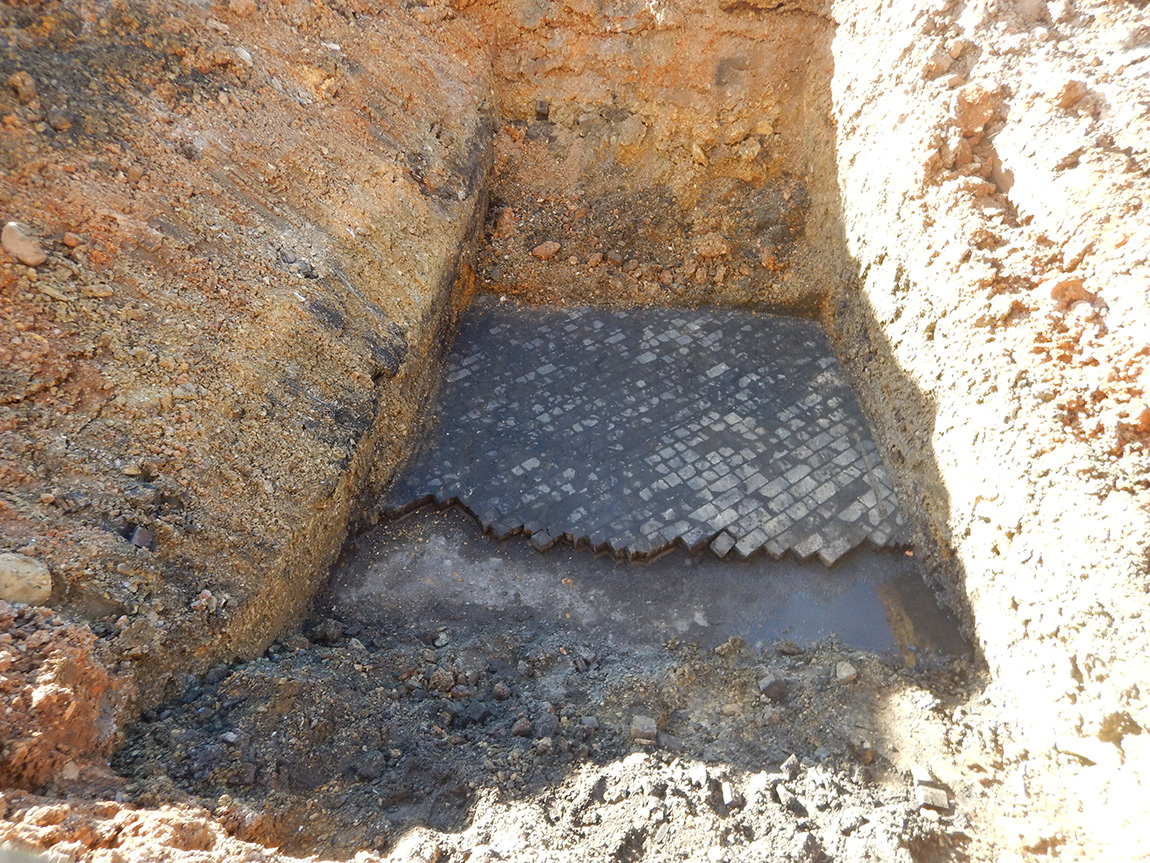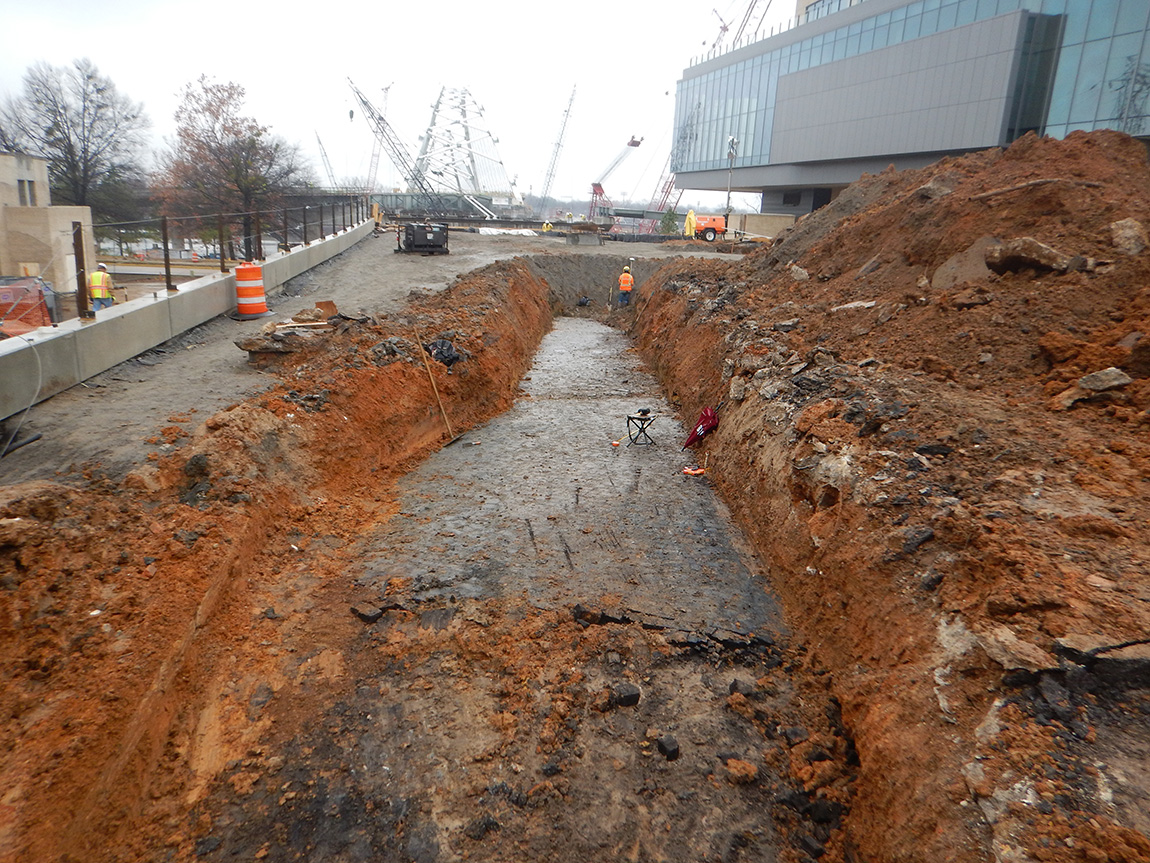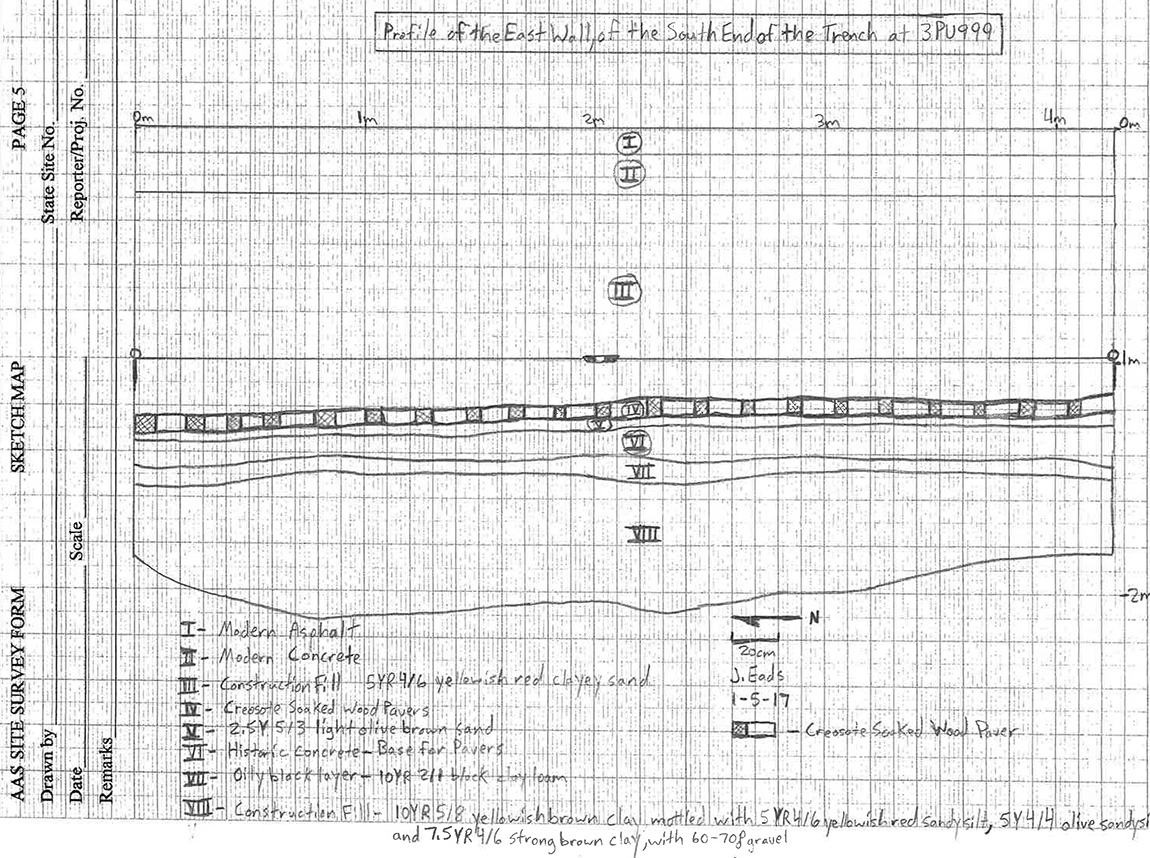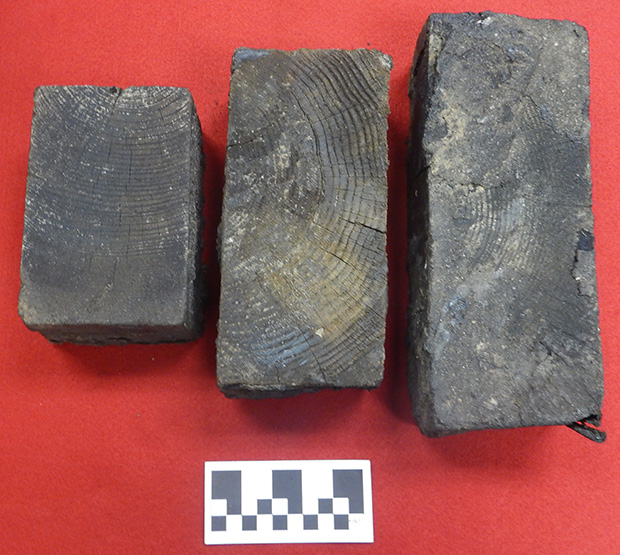
By Kristina Boykin with contributions from Jason Eads, Arkansas Department of Transportation (ARDOT's Cultural Resources Section)
Feature of the Month - May 2023
Site 3PU999 is a 1912 wood block road segment discovered during the replacement of the Broadway Street Bridge in downtown Little Rock (Figure 1). The segment recorded went from Markham Street down to the river, prior to the construction of the original Broadway Bridge in 1923. The discovery was found buried under 4 to 7 feet of fill material with the higher depth descending north toward the Arkansas River. The total site area documented was 61.50 m2 and mostly covered the portion being disturbed for a drainage pipeline (Figure 2). The road segment’s profile revealed a concrete foundation, a layer of sand, and creosote-infused wood block pavers, measuring just under 1 ft. in height (Figures 3 and 4).
The only artifacts found consisted of the wood pavers with a few samples taken to the lab to compare lengths, widths, and heights (Figure 5). The blocks’ depth indicated the amount of expected traffic on the roads, and the width indicated the residential business classification. Based on the analysis of blocks, Broadway Street had low traffic counts and was classified as a business street.
The information below is based on research from maps, newspaper articles, and various primary and secondary sources.



Wood Block Pavement Tidbits:
-
Wood pavement buckled during heavy rains or high humidity and required frequent repairs.
-
Southern Yellow Pine was commonly used for these wood block pavers.
-
The first wood block road in Little Rock dates to 1872.
-
First creosote wood block paving began in 1909 in Little Rock.
-
Ayer and Lord Tie Company began a plant in Argenta in 1910 that produced creosote wood blocks until 1922.
-
Other Arkansas cities that used creosoted wood blocks for pavement included Fort Smith, Hot Springs, and Pine Bluff.
-
Wood blocks fell out of use due to varying problems with repairs, new asphalt pavement use, and discontinuation of manufactured blocks in Arkansas.

Broadway Street and Bridge Tidbits:
-
Broadway Street was one of the original streets and one of three main thoroughfares established when the city grid was laid out in 1821.
-
Originally known as West Main Street, the street was renamed to Broadway and served as the upper ferry or steamboat landing by 1870.
-
The St. Louis and Iron Mountain Railroad constructed tracks paralleling the river in 1880 that cut off the city street. The railroad led to an increase in industries at the foot of Broadway Street and included a sawmill and lumber yards, coal company, and grain warehouses.
-
Broadway Street was surfaced with macadam (gravel with tar) by 1901.
-
The 1912 wood block road serviced the eastern entrance of City Hall (built in 1908) close to the intersection of Markham Street and an electric plant at the foot of the street.
-
Broadway Bridge opened to traffic on March 14, 1923. The 1923 bridge required a higher elevation with excessive fill material that buried the 1912 wood block road.
The site was determined eligible for inclusion in the National Register of Historic Places under Criterion A (local significance associated with transportation infrastructure), Criterion C (construction techniques for the early twentieth century), and Criterion D (research potential). Although mostly destroyed, small intact segments, such as the eastern trench, remain underneath the current Broadway Street.
Feature of the Month Series
Archeological features are elements or structures that are nonportable or cannot be easily removed from a site (such as a wall or a post hole). Archeologists document archeological features extensively in the field to record what will otherwise be destroyed in the process of excavation. The records of these features are often all that is left at the end of an excavation. Excellent record keeping is necessary for these features to provide insight into the archeological record and site formation.
In this series, we present interesting and important archeological features that have helped archeologists to better or more fully understand the sites on which they were working. New features will be added monthly. Find the list of features here.
